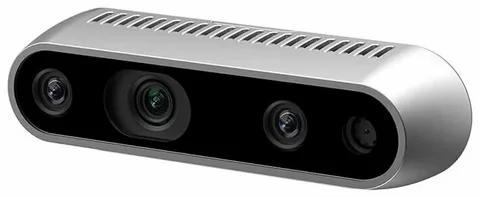Technology is evolving faster than ever, and one of the most fascinating advancements in recent years is the 3D depth camera. From smartphones and robots to self-driving cars and augmented reality, 3D depth cameras are at the heart of how machines perceive the world. But what exactly is a 3D depth camera, how does it work, and why is it so important?
In this comprehensive guide, we’ll explore the fundamentals of 3D depth cameras, their applications across industries, the different types of depth sensing technologies, and what to consider when choosing one for your project or product. Whether you’re a tech enthusiast, developer, engineer, or business owner, this article will give you a clear and complete understanding of 3D depth cameras and their real-world impact.
What Is a 3D Depth Camera?
A 3D depth camera is a type of imaging device that captures not just the color and intensity of a scene (as with traditional cameras) but also the distance of objects from the camera. This enables the camera to “see” in three dimensions by creating depth maps or point clouds that accurately represent spatial information.
The depth information allows machines and software to understand shapes, sizes, and distances in real-time, making them incredibly useful in fields like robotics, automation, healthcare, and more.
How Does a 3D Depth Camera Work?
The working principle of a 3D depth camera depends on the underlying technology it uses. There are several different methods that enable these cameras to sense depth:
1. Stereo Vision
Stereo vision mimics human eyesight. Two cameras are placed at slightly different angles to capture images of the same scene. The system compares the differences (disparity) between the images to calculate depth.
2. Time-of-Flight (ToF)
Time-of-Flight depth cameras send out light pulses (often infrared) and measure the time it takes for the light to reflect back from objects. The time delay corresponds to distance, allowing precise depth measurements.
3. Structured Light
This technique projects a known pattern (such as a grid or dot matrix) onto the scene. The way the pattern deforms when it hits surfaces helps the camera calculate depth by analyzing the distortion.
4. LIDAR (Light Detection and Ranging)
Although not typically labeled as cameras, LIDAR systems perform similar depth sensing functions using laser pulses. They are widely used in autonomous vehicles and high-end robotics.
Key Features of 3D Depth Cameras
Understanding the capabilities of a 3D depth camera helps in selecting the right one for your use case. Here are some important features to look for:
- Depth Range: How far the camera can accurately measure depth.
- Resolution: Both the spatial resolution of the image and the depth resolution.
- Field of View (FOV): The area the camera can cover in one frame.
- Frame Rate: Higher frame rates allow for smoother tracking and real-time applications.
- Accuracy: Precision in depth measurement is crucial for applications like medical imaging and robotics.
- Size and Weight: Critical for integration in mobile or compact systems.
Applications of 3D Depth Cameras
The applications of 3D depth cameras are diverse and continue to grow as the technology advances and becomes more affordable. Here are some of the most common and impactful uses.
Robotics and Automation
Robots use 3D depth cameras for object recognition, navigation, and obstacle avoidance. In warehouses, robots equipped with these cameras can pick, sort, and move items with high accuracy.
Autonomous Vehicles
Self-driving cars use a combination of cameras, including 3D depth cameras, to detect pedestrians, vehicles, and road conditions. LIDAR and depth sensors provide the spatial awareness necessary for safe navigation.
Augmented Reality (AR) and Virtual Reality (VR)
Depth sensing is essential in creating immersive AR/VR experiences. It allows devices to understand their surroundings, anchor digital content to physical objects, and provide natural user interactions.
Facial Recognition and Biometrics
Many smartphones now come equipped with front-facing 3D depth cameras used for secure face unlock. These systems map facial contours in detail, making them more secure than traditional 2D image recognition.
Gaming and Motion Capture
Depth cameras track full-body motion, enabling gesture-based controls in gaming systems. They’re also used in creating lifelike animations for films and video games through motion capture technology.
Healthcare and Medical Imaging
3D depth cameras help monitor patient movements in physical therapy, assess postures, and even assist in surgery by providing accurate 3D models of the human body in real-time.
Industrial Inspection and Quality Control
Manufacturers use 3D depth cameras to inspect products for defects, measure dimensions, and ensure quality. Depth sensing improves speed and accuracy in automated inspection systems.
Advantages of Using 3D Depth Cameras
Why are 3D depth cameras becoming so essential in various industries? Here are some notable advantages:
- Enhanced Perception: Machines can interpret complex environments with better accuracy.
- Real-Time Feedback: High-speed data processing enables real-time interaction.
- Non-Contact Measurement: Perfect for applications where physical contact is impractical or impossible.
- Versatility: Works across different environments—indoor, outdoor, bright or low light.
- Compact Integration: Many modern 3D depth cameras are compact and can be easily integrated into mobile and embedded systems.
Popular 3D Depth Camera Models
Here are a few popular 3D depth camera options on the market today, suitable for different budgets and use cases:
| Camera Model | Technology | Depth Range | Ideal Use Case |
| Intel RealSense D435 | Stereo Vision | 0.1m–10m | Robotics, AI, indoor mapping |
| Microsoft Azure Kinect | ToF | 0.5m–5m | AR/VR, gesture recognition |
| Orbbec Astra | Structured Light | 0.4m–8m | Education, health, 3D scanning |
| ZED 2 by Stereolabs | Stereo + AI | Up to 20m | Drones, outdoor navigation |
| LIPSedge AE400 | ToF | 0.2m–4m | Industrial automation, QC |
Each of these depth cameras comes with different SDKs and platform support, so choosing the right one will depend on your technical requirements and intended application.
Challenges and Limitations
While the benefits of 3D depth cameras are substantial, there are still some limitations and challenges to consider:
- Environmental Sensitivity: Certain technologies like structured light may not perform well in bright sunlight.
- Power Consumption: Some depth sensing systems require significant power, especially in mobile applications.
- Cost: High-end depth cameras, especially LIDAR systems, can be expensive.
- Data Processing: The volume of data generated is large and requires powerful computing resources to process in real-time.
Despite these hurdles, continuous innovation is addressing many of these challenges, making depth sensing more accessible and reliable than ever before.
What to Consider When Buying a 3D Depth Camera
If you’re planning to purchase a 3D depth camera, here are a few key considerations:
- Purpose: Define your application. Will you use it for indoor navigation, outdoor mapping, or human tracking?
- Depth Range: Choose a model that covers the required range for your environment.
- Software Compatibility: Ensure it supports your platform (Windows, Linux, ROS, Android, etc.).
- SDK Support: Look for cameras with robust development tools and community support.
- Budget: There’s a wide range of options—from budget-friendly units to professional-grade systems.
The Future of 3D Depth Camera Technology
The future of 3D depth camera technology looks incredibly promising. As artificial intelligence and machine learning continue to evolve, the synergy between depth sensing and AI will drive new levels of automation, personalization, and safety.
In the next few years, we can expect more compact, energy-efficient, and affordable 3D depth cameras. Consumer electronics will become more interactive, robots will become smarter, and virtual experiences will become indistinguishable from reality—all thanks to improvements in 3D depth perception.
Conclusion
The 3D depth camera is more than just a new gadget—it’s a transformational technology reshaping how we interact with the digital world. From precise measurements to immersive experiences, the power of depth perception is unlocking new possibilities across countless industries.
Whether you’re integrating one into a robotic system, developing a mobile app, or exploring augmented reality, understanding how 3D depth cameras work and where they shine is essential to staying ahead in today’s tech-driven world.
Choosing the right 3D depth camera can make all the difference in the performance and success of your project. As the technology becomes more advanced and accessible, its potential will only grow—so now is the perfect time to explore how you can harness the power of 3D vision.
Also read: Why microschooling is the future of education — discover the flexible learning revolution.

